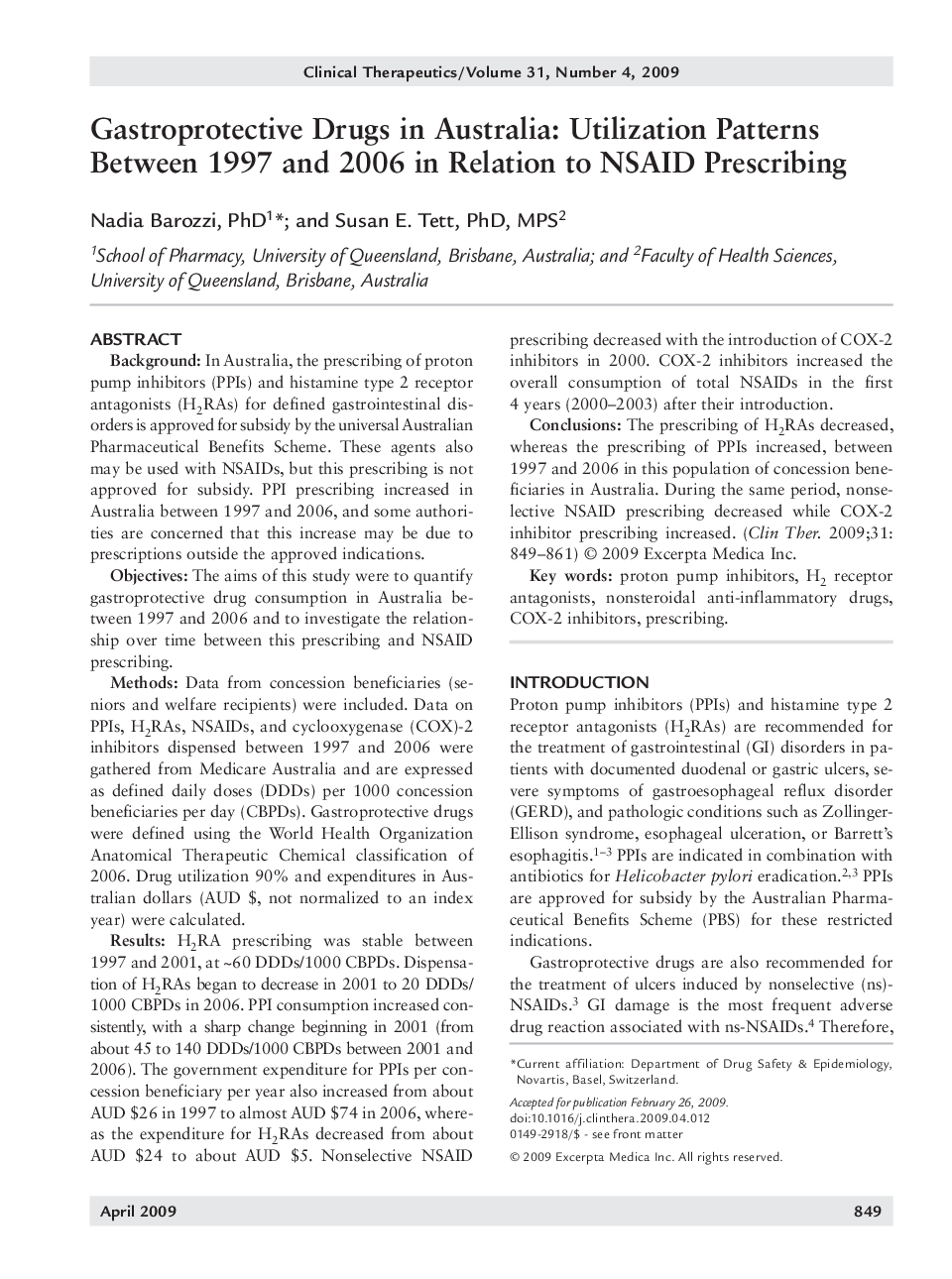| کد مقاله | کد نشریه | سال انتشار | مقاله انگلیسی | نسخه تمام متن |
|---|---|---|---|---|
| 2528590 | 1119976 | 2009 | 13 صفحه PDF | دانلود رایگان |

Background: In Australia, the prescribing of proton pump inhibitors (PPIs) and histamine type 2 receptor antagonists (H2RAs) for defined gastrointestinal disorders is approved for subsidy by the universal Australian Pharmaceutical Benefits Scheme. These agents also may be used with NSAIDs, but this prescribing is not approved for subsidy. PPI prescribing increased in Australia between 1997 and 2006, and some authorities are concerned that this increase may be due to prescriptions outside the approved indications.Objectives: The aims of this study were to quantify gastroprotective drug consumption in Australia between 1997 and 2006 and to investigate the relationship over time between this prescribing and NSAID prescribing.Methods: Data from concession beneficiaries (seniors and welfare recipients) were included. Data on PPIs, H2RAs, NSAIDs, and cyclooxygenase (COX)-2 inhibitors dispensed between 1997 and 2006 were gathered from Medicare Australia and are expressed as defined daily doses (DDDs) per 1000 concession beneficiaries per day (CBPDs). Gastroprotective drugs were defined using the World Health Organization Anatomical Therapeutic Chemical classification of 2006. Drug utilization 90% and expenditures in Australian dollars (AUD $, not normalized to an index year) were calculated.Results: H2RA prescribing was stable between 1997 and 2001, at ~60 DDDs/1000 CBPDs. Dispensation of H2RAs began to decrease in 2001 to 20 DDDs/ 1000 CBPDs in 2006. PPI consumption increased consistently, with a sharp change beginning in 2001 (from about 45 to 140 DDDs/1000 CBPDs between 2001 and 2006). The government expenditure for PPIs per concession beneficiary per year also increased from about AUD $26 in 1997 to almost AUD $74 in 2006, whereas the expenditure for H2RAs decreased from about AUD $24 to about AUD $5. Nonselective NSAID prescribing decreased with the introduction of COX-2 inhibitors in 2000. COX-2 inhibitors increased the overall consumption of total NSAIDs in the first 4 years (2000–2003) after their introduction.Conclusions: The prescribing of H2RAs decreased, whereas the prescribing of PPIs increased, between 1997 and 2006 in this population of concession beneficiaries in Australia. During the same period, nonse-lective NSAID prescribing decreased while COX-2 inhibitor prescribing increased.
Journal: Clinical Therapeutics - Volume 31, Issue 4, April 2009, Pages 849-861